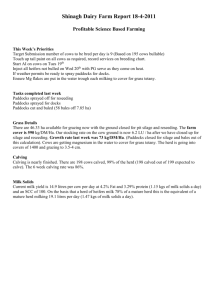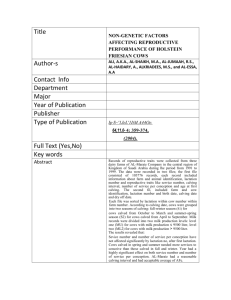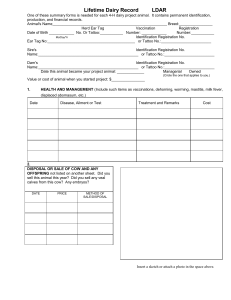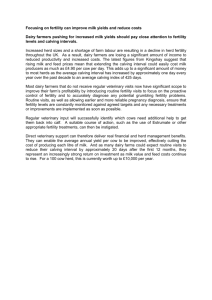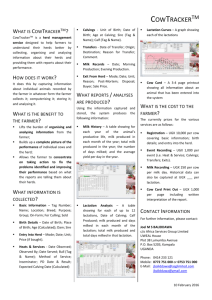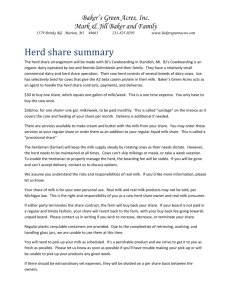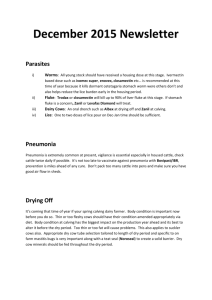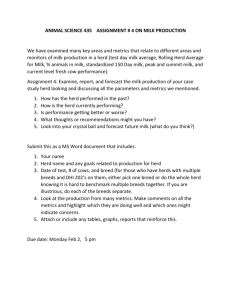Selecting Sires for Improved Milk Protein
advertisement
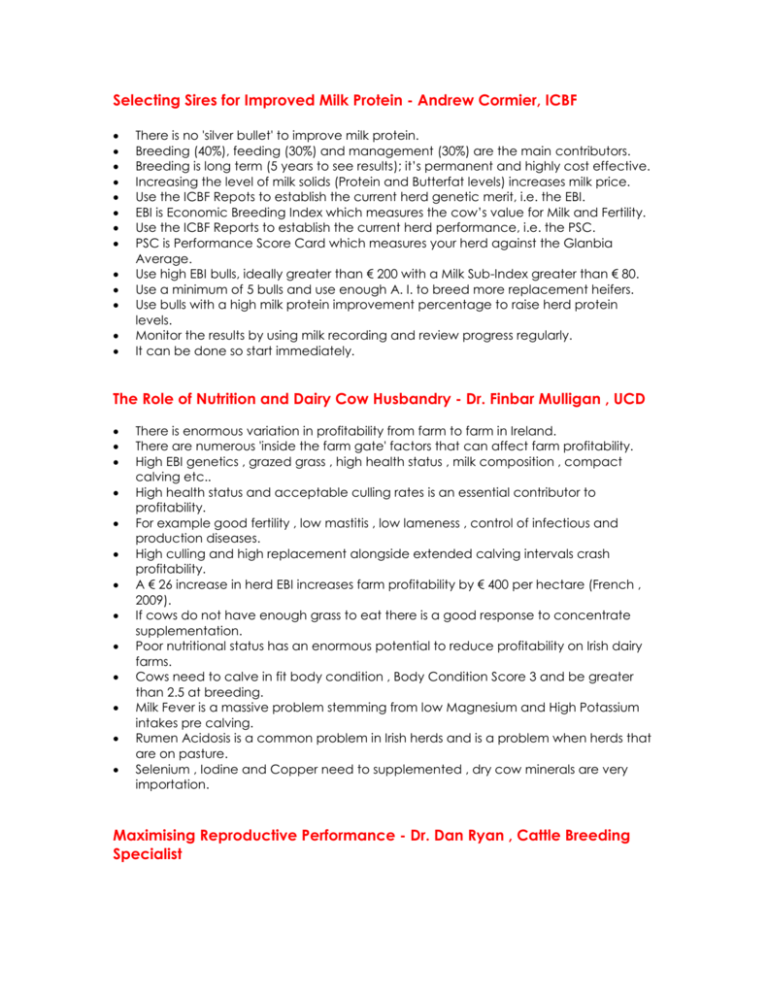
Selecting Sires for Improved Milk Protein - Andrew Cormier, ICBF There is no 'silver bullet' to improve milk protein. Breeding (40%), feeding (30%) and management (30%) are the main contributors. Breeding is long term (5 years to see results); it’s permanent and highly cost effective. Increasing the level of milk solids (Protein and Butterfat levels) increases milk price. Use the ICBF Repots to establish the current herd genetic merit, i.e. the EBI. EBI is Economic Breeding Index which measures the cow’s value for Milk and Fertility. Use the ICBF Reports to establish the current herd performance, i.e. the PSC. PSC is Performance Score Card which measures your herd against the Glanbia Average. Use high EBI bulls, ideally greater than € 200 with a Milk Sub-Index greater than € 80. Use a minimum of 5 bulls and use enough A. I. to breed more replacement heifers. Use bulls with a high milk protein improvement percentage to raise herd protein levels. Monitor the results by using milk recording and review progress regularly. It can be done so start immediately. The Role of Nutrition and Dairy Cow Husbandry - Dr. Finbar Mulligan , UCD There is enormous variation in profitability from farm to farm in Ireland. There are numerous 'inside the farm gate' factors that can affect farm profitability. High EBI genetics , grazed grass , high health status , milk composition , compact calving etc.. High health status and acceptable culling rates is an essential contributor to profitability. For example good fertility , low mastitis , low lameness , control of infectious and production diseases. High culling and high replacement alongside extended calving intervals crash profitability. A € 26 increase in herd EBI increases farm profitability by € 400 per hectare (French , 2009). If cows do not have enough grass to eat there is a good response to concentrate supplementation. Poor nutritional status has an enormous potential to reduce profitability on Irish dairy farms. Cows need to calve in fit body condition , Body Condition Score 3 and be greater than 2.5 at breeding. Milk Fever is a massive problem stemming from low Magnesium and High Potassium intakes pre calving. Rumen Acidosis is a common problem in Irish herds and is a problem when herds that are on pasture. Selenium , Iodine and Copper need to supplemented , dry cow minerals are very importation. Maximising Reproductive Performance - Dr. Dan Ryan , Cattle Breeding Specialist * Reproduction is influenced by Pre and Post Calving Management , Disease and Breeding Management. * Pre - Calving Management - the dry period should ideally be 8 to 10 weeks with all cows scanned. * Calve cows fit , address lameness , feed good quality silage and feed dry cow minerals. * Post - Calving Management - difficult calving reduces fertility , do not overcondition cows. * Feed high quality silage , avoid excessive weight loss , feed concentrates according to production. * Heat detection , spend time observing cows , use tail paint and watch cows closely. * Disease Management - vaccinate if there is a problem and adopt a closed herd policy. * Vaccinate at the correct time , get your herd checked out and keep records. * Bovine Viral Diarrhoea , Leptospirosis and Infectious Bovine Rhinitis vaccines are available . * Cows need to build condition in late lactation and not loose too much in early lactation. * Breeding Management - Synchronisation can tighten the calving period but fit animals are required. * Scanning is used to determine the reproductive status and identify any herd health problems. * A. I. will work but requires a large labour input to detect heats while many stock bulls can be infertile.
